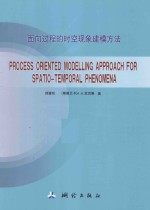
- 作 者:徐爱功,(斯里兰卡)A.H.拉克曼著
- 出 版 社:北京:测绘出版社
- 出版年份:2013
- ISBN:9787503032233
- 标注页数:143 页
- PDF页数:151 页
请阅读订购服务说明与试读!
订购服务说明
1、本站所有的书默认都是PDF格式,该格式图书只能阅读和打印,不能再次编辑。
2、除分上下册或者多册的情况下,一般PDF页数一定要大于标注页数才建议下单购买。【本资源151 ≥143页】
图书下载及付费说明
1、所有的电子图书为PDF格式,支持电脑、手机、平板等各类电子设备阅读;可以任意拷贝文件到不同的阅读设备里进行阅读。
2、电子图书在提交订单后一般半小时内处理完成,最晚48小时内处理完成。(非工作日购买会延迟)
3、所有的电子图书都是原书直接扫描方式制作而成。
Chapter 1 Introduction 1
1.1 Scope of the Research 4
1.2 Objectives 5
1.3 Research Questions 6
1.4 Motivation 8
Chapter 2 Theoretical Review 10
2.1 Introduction 10
2.2 Abstraction of Reality 11
2.3 Stages in the Development of Spatio-temporal Modelling 16
2.4 Underlying Approaches 23
2.5 Spatio-temporal Holes 33
2.6 Teleporting to Ontological World 35
Chapter 3 Ontological Foundation 36
3.1 Introduction 36
3.2 Process 36
3.3 Ontological Foundation for the Spatio-temporal Phenomenon 41
3.4 Introduction to П-Calculus Language 44
3.5 П-Calculus for Phenomenal Decomposed Elements 47
3.6 Concluding Part Ⅰ 52
Chapter 4 Conceptual Model 53
4.1 Introduction 53
4.2 Tightening Some Conceptual Screws 53
4.3 Spatio-Temporal Process Model Structure 54
4.4 Model Behaviour 58
4.5 Mechanism of the Model Introduction to Spatio-temporal Extended П-calculus 59
4.6 Model Output Process Queries 63
4.7 Towards the Model Interpretation 65
Chapter 5 Model Interpretation 66
5.1 Introduction 66
5.2 Modelling Environment 66
5.3 Modelling Structure 66
5.4 Conceptual Model Simulation 72
5.5 Preamble to the Expediency 90
Chapter 6 Applicability of STPM 91
6.1 Introduction 91
6.2 How Natural are Natural Hazards? 91
6.3 Simulation of Natural Hazards 92
6.4 Concluding Remarks 100
Chapter 7 Logical Process Modelling 101
7.1 Introduction 101
7.2 Introduction to UML-RT 101
7.3 Logical Schema of STPM Structural Architecture 104
7.4 Logical Schema of STPM Behavioural Architecture 108
7.5 Logical Model Simulation 114
7.6 Conclusion 122
Chapter 8 Implementation Pathway 123
8.1 Introduction 123
8.2 Declaration of Model Primitives 124
8.3 Declaration of Model Behaviours 125
8.4 Identified Iimitations 127
8.5 Concluding Part 127
Chapter 9 Conclusions and Recommendations 129
9.1 Conclusions 129
9.2 Recommendations 131
References 132
Nomenclature 143
